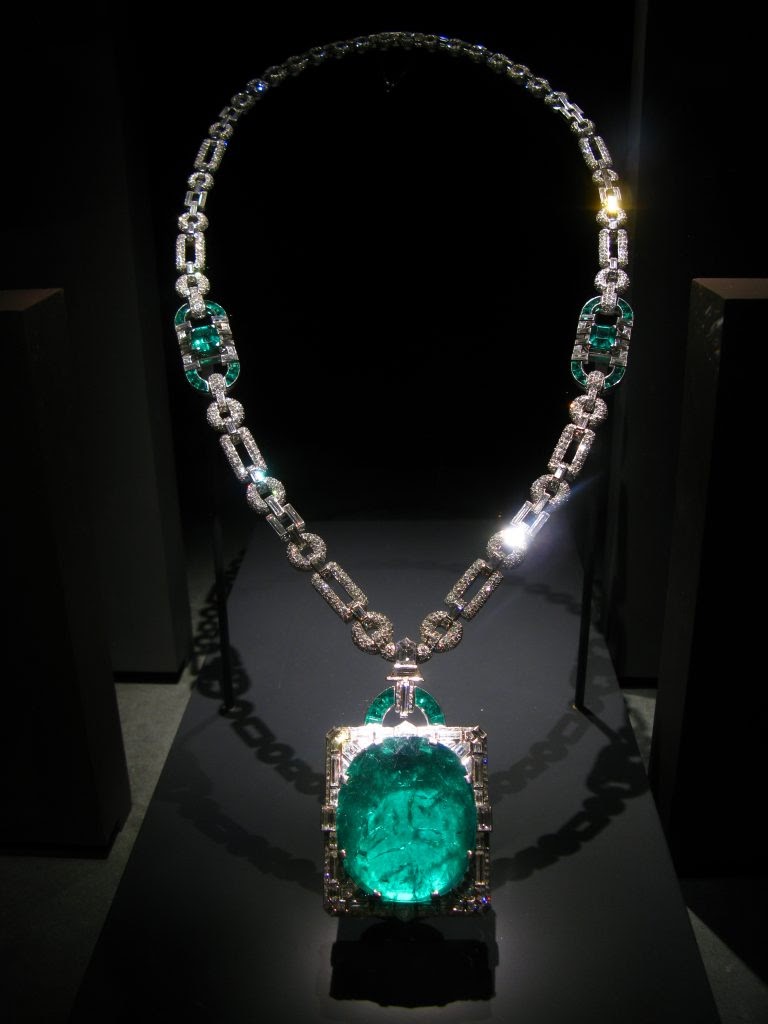Buying Tips for Emerald Jewelry
Factors of a Quality Jewelry Setting

Whether you are purchasing a gift or buying for yourself, it is important to understand how to assess the quality of a piece of finished jewelry. There are six to seven basic features of the setting to review when deciding to make a purchase.
What to Ask
- Does the metal hold the gems securely?
- Is the metal holding the stone durable enough to survive wear over time?
- What is the quality of the craftsmanship?
- Are there any rough areas that could catch on clothing?
- Are any of the gems chipped or crooked?
- Are the gems level and flat or do they overlap?
- Are the gems well-matched? – This question only applies if there are multiple gems of the same color, which is not always the case in a piece of jewelry.
Soldering
J8810 | left | medium | play | “Emerald Jewelry ID: J8810” This refers to the different metals being attached together with “solder”, a metal with a lower melting point than the pieces being joined.
Check the soldering on all parts of the mount. Precious metal jewelry is often constructed with different jewelry manufacturing methods. This can be any combination of die struck, cast, electroformed, and hand fabricated components, whatever is required for the individual piece. When the metal is assembled correctly, the solder joints should be invisible. When done incorrectly, solder joints can be cracked or have areas where excess solder is evident. This is important because ultrasonic jewelry cleaners can damage poorly soldered jewelry. Poor soldering can also discolor over time, and low-quality solder will tarnish.
Metal Porosity
Like many other materials, metal is capable of being porous. Household cleaners like bleach can create pits in jewelry metal, which weakens the overall piece. Most jewelry metals are alloys, which is why cleaners can put pits in them. Improper jewelry crafting techniques are also susceptible to pitting too. Keep your eyes peeled for any cracks or pits in the metal, especially where it can be difficult to see and where it wouldn’t normally be seen.
Finish
J8814 | right | play | medium | “Emerald Jewelry ID: J8814” Fine jewelry is polished to shine on the back as well as the front of the piece, while mass produced jewelry lacks this quality. Any good jewelry piece should have no evidence of tool marks, no jagged edges, should not scratch easily or catch on clothing.
Type of Construction
Is the jewelry hollow, or solid? Hollow pieces can appear chunky, but be light, and have a lower cost than a solid piece. Electroplating is one example of a hollow jewelry technique. The main caveat of this technique is that hollow pieces can dent easily and be difficult to repair. In other words, this is not a good type of jewelry to be worn daily.
Metal Selection for Emeralds
Different metals have different durability, and different price points. Most jewelry is either silver, gold (14K or 18K), or platinum. Silver is easier to work with, gold does not tarnish, and platinum is the most durable. Other metals are possible to use like titanium, which is highly durable and light. However, most jewelers do not work in titanium because it is extremely difficult to work with. There has also been an evolution in the available alloys, as well as regulations for toxic materials .
J8864 | left | play | “Emerald Jewelry ID: J8864” Durability aside, an important aspect is selecting the color of metal that is the most suitable for your emerald. Since this will be a piece that can last generations, it is important to pick out something you will love. There are also various meanings associated with these metals, and an array of different color alloys available.
Since gold has a yellow color, this tends to emphasize yellow colors in an emerald. However, gold also tends to bring out the richest color in emeralds.
Silver, white gold, and platinum typically bring out the desirable bluish tones in emeralds, which is what commands the highest prices.

